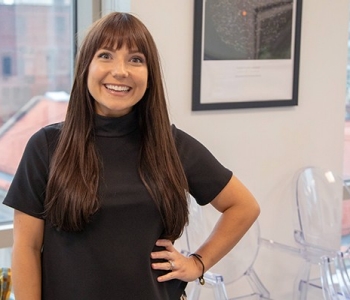Dr. Elaine Hardman Fights Breast Cancer with Walnuts

Dr. Elaine Hardman, a biochemistry specialist at Marshall University in West Virginia, has pursued breast cancer research for two decades. A Girl Scout alum, she’s part of a research team that determined women may be able to reduce their breast cancer risk by including two ounces of walnuts (roughly 14 raw or lightly toasted nuts) daily in their diets. Dr. Hardman also believes this protocol can delay the growth of existing cancer cells.
The results have played out in mice (breast cancer developed at less than half the rate of the group with a typical diet and was much more responsive to chemotherapy) as well as in a limited human study, and Dr. Hardman expects the research also indicates that walnuts can be beneficial in fighting other cancers, such as prostate, colon, and lung.
So why walnuts? They contain a number of protective compounds, including potent antioxidants and the highest amount of omega-3 of any nut.
Of course, this doesn’t mean we can say goodbye to cancer forever. For one, “there aren’t enough walnuts in the world for people to eat [the amount that might be needed] a day,” says Dr. Hardman, who adds that “the [cancer-fighting] components are also found in other fruits and vegetables.”
The research of this doctor and former Girl Scout clearly has profound implications for fighting cancer, the second leading cause of death in the U.S.—and Dr. Hardman credits the development of her self-confidence, independence, and leadership skills in good part to her time in Girl Scouts, which set her up for a life as a medical researcher in a field that continues to be dominated by men.
“I grew up in a very small town in backwoods Florida, and Girl Scouting was a link to the outside world,” she explains.
Dr. Hardman recalls participating in the Girl Scout Senior Roundup in Idaho in 1965, at age 15. Described by many former Girl Scouts as the pinnacle of the Girl Scout experience at the time, as well as a formative one, roundups convened thousands of teen Girl Scouts and Girl Guides from around the country and around the world. The girls pitched tents and built outdoor kitchens and medical areas, and the camps functioned as virtual cities for the time they were there.
“It was a big deal for me to travel there,” says Dr. Hardman. “But I was determined, and Girl Scouting helped me along the way.”
Dr. Hardman’s involvement with Girl Scouts spans decades. She joined as a Brownie and stayed active throughout her school years, earning her Curved Bar Award (a predecessor of the Girl Scout Gold Award) and serving as a de facto troop leader in high school. When her daughter (a Gold Award Girl Scout) joined in the ‘70s as a Daisy, Dr. Hardman again became active in Girl Scouts—and she worked at a Girl Scout sailing camp as recently as last summer. In between, she got her Ph.D. and became a prominent cancer researcher and biochemistry professor.
“I came from an area where graduating from high school was a big deal and going to college was an even bigger deal,” says Dr. Hardman. “But Girl Scouting gave me a sense that I could do what I wanted to do if I worked at it.”
 Sign up now: FREE Girl Scout Network enewsletter
Sign up now: FREE Girl Scout Network enewsletter
Sign up for monthly insights from alums who pay it forward with career tips, invitations to national and local events, advocacy, volunteer opportunities, and more! Connect to the Girl Scout Network.





